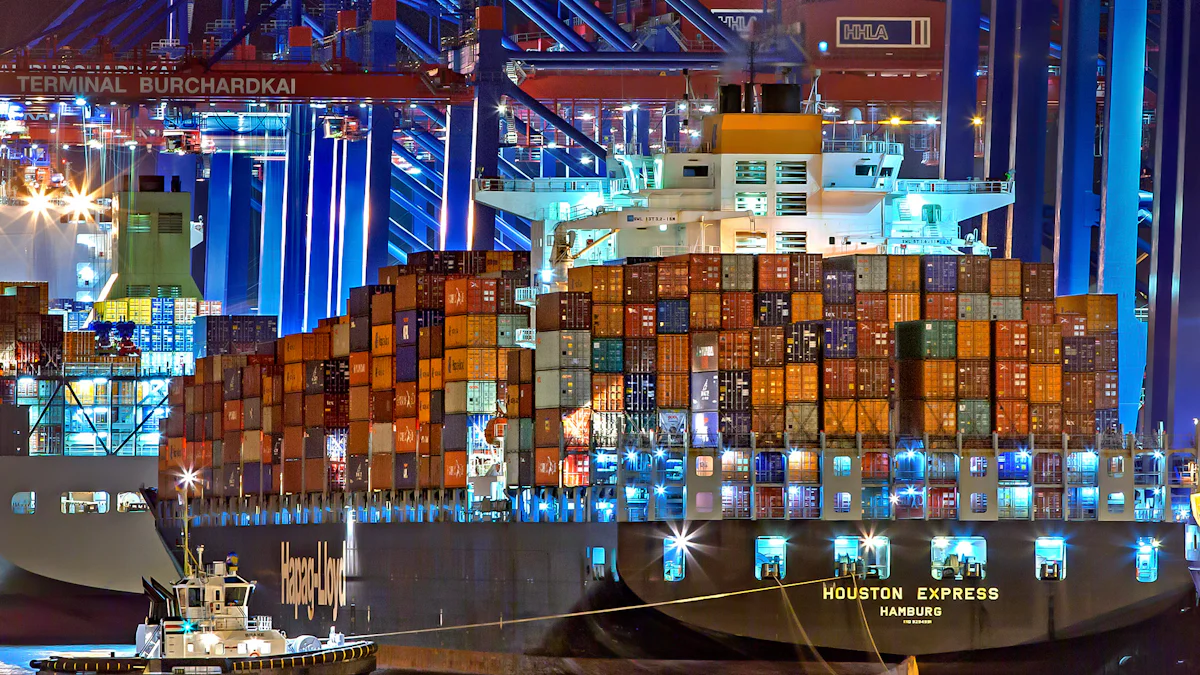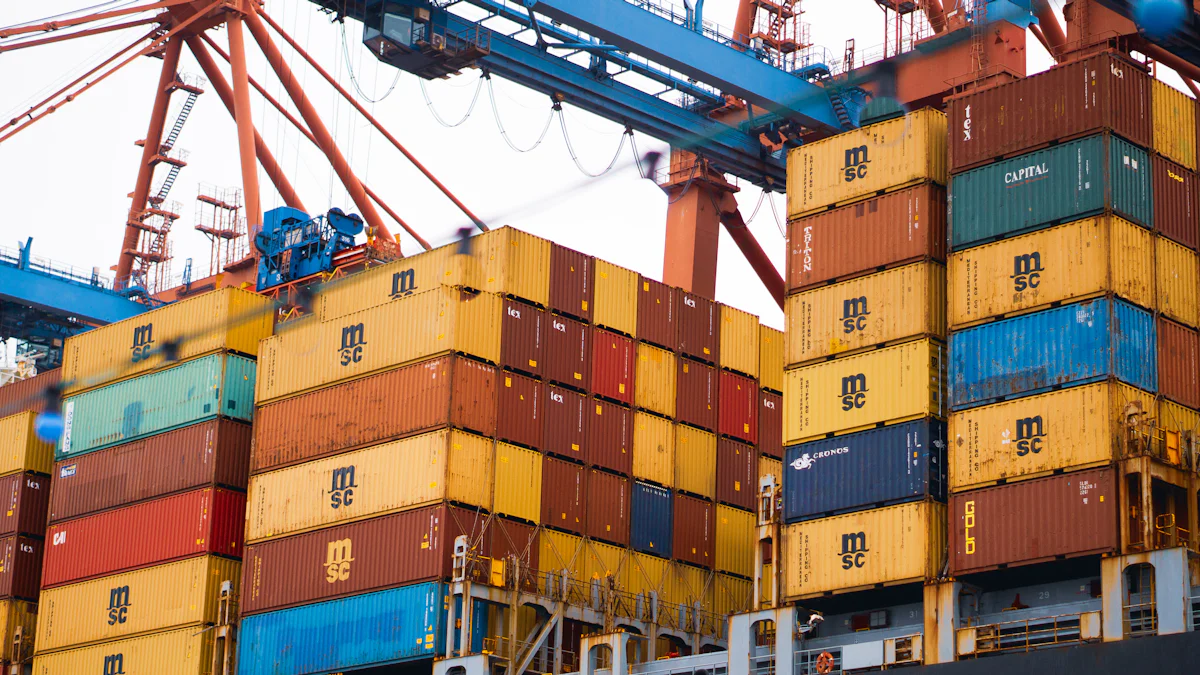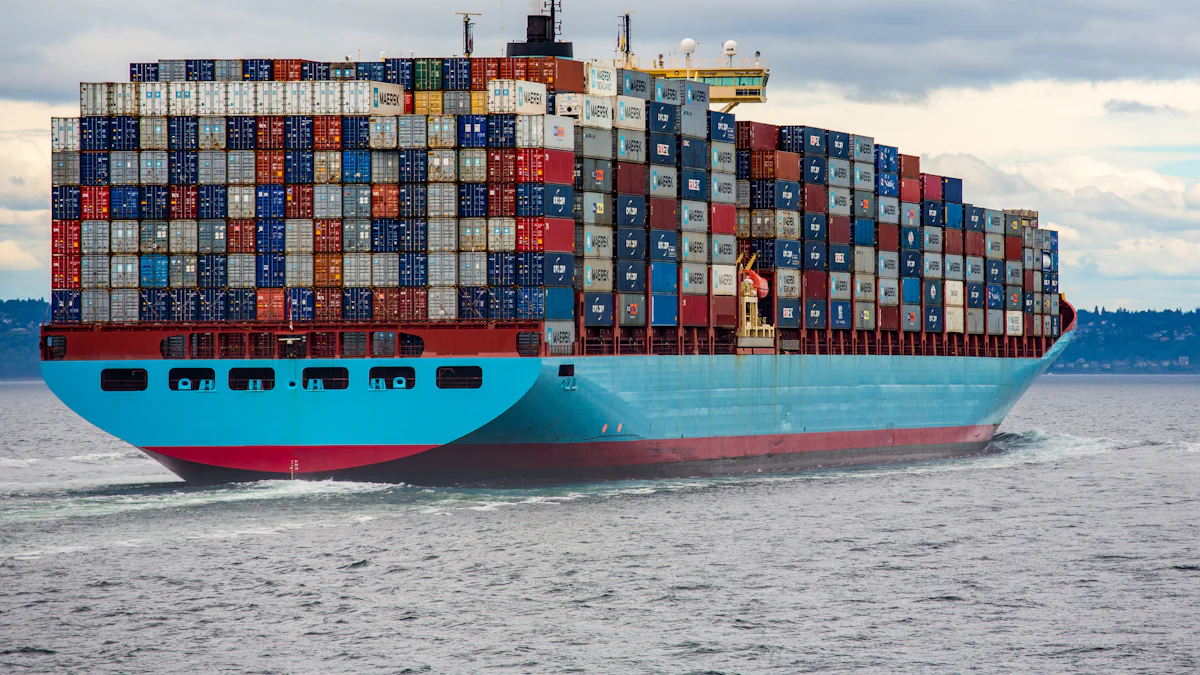Ocean Freight Services Decoded for Speed and Cost Efficiency

Ocean freight plays a vital role in global trade, moving approximately 1.95 billion metric tons of cargo annually. You must weigh cost, speed, and reliability when choosing a shipping method. Sea freight offers cost-effective solutions for large shipments, with dependable schedules and routes managed by an experienced ocean freight company to ensure timely delivery.
Key Takeaways
Ocean freight is a cost-effective shipping solution, often 12 to 16 times cheaper than air freight, making it ideal for businesses shipping large volumes of goods.
For non-urgent deliveries, ocean freight provides a reliable alternative, with transit times ranging from 14 to 42 days, allowing businesses to optimize their logistics budget.
Choosing a reputable ocean freight provider enhances reliability; look for carriers with strong safety records and transparent communication to minimize risks and ensure timely deliveries.
What Is Ocean Freight and Its Role in Global Trade?

Defining Ocean Freight
Ocean freight refers to the transportation of goods across seas using container vessels. This method plays a vital role in cross-border trade, enabling the movement of large quantities of goods between countries. It offers two main options: full container load (FCL) for larger shipments and less than container load (LCL) for smaller ones. Compared to air freight, ocean freight is slower but significantly more cost-effective, making it ideal for bulk shipments. While air freight suits high-value or time-sensitive goods, sea freight provides an economical solution for businesses prioritizing cost over speed.
Importance of Ocean Freight in Supply Chains
Ocean freight serves as the backbone of global supply chains. It handles over 80% of international trade by volume, ensuring goods reach markets worldwide. You can rely on it to transport raw materials, finished products, and everything in between. Its ability to accommodate large shipments reduces transportation costs, helping businesses maintain competitive pricing. Additionally, sea freight offers dependable schedules and routes, ensuring timely delivery for businesses operating on tight timelines. By integrating ocean freight into your supply chain, you can achieve a balance between cost efficiency and operational reliability.
Common Industries Relying on Ocean Freight
Several industries depend heavily on ocean freight for their operations. The automotive sector uses it to ship vehicles and parts globally. Electronics manufacturers rely on it to transport components and finished products. The fast-moving consumer goods (FMCG) industry depends on sea freight to distribute bulk items like food and beverages. Heavy equipment, medical supplies, and even renewable energy sectors also benefit from its cost-effective shipping solutions. If your business involves large-scale production or international trade, ocean freight likely plays a crucial role in your logistics strategy.
Freight Comparison: Cost, Speed, and Reliability

Cost: Why Ocean Freight Is a Cost-Effective Option
Ocean freight offers one of the most economical solutions for transporting goods globally. It costs significantly less than air freight, often 12 to 16 times cheaper. This affordability stems from its ability to carry large volumes of cargo at a lower expense. For businesses shipping bulk goods, this cost advantage makes ocean freight a practical choice. While air freight provides faster transit, its high cost limits its use to time-sensitive or high-value shipments. Sea freight, on the other hand, allows you to optimize your logistics budget without compromising on the scale of your operations.
Speed: Comparing Ocean Freight to Air and Land Shipping
When it comes to delivery speed, ocean freight lags behind air and land shipping. Air freight typically delivers goods within 5 to 10 days, while ocean freight requires 4 to 6 weeks. For smaller shipments, less than container load (LCL) transit times range from 14 to 39 days. Full container load (FCL) shipments take 23 to 42 days. In contrast, land freight offers a middle ground, with transit times of 13 to 17 days. If your priority is speed, air freight is the fastest option. However, for non-urgent deliveries, ocean shipping provides a cost-effective alternative.
Shipping Method | Transit Time |
|---|---|
LCL (less than container load) | |
FCL (full container load) | 23 - 42 days |
Air freight | hours to few days |
Land freight | 13 - 17 days |
Reliability: Key Factors Influencing Ocean Freight Consistency
Ocean freight reliability depends on several factors. Port congestion often causes delays in transporting goods. Security issues at ports can also affect shipment safety. Additionally, rising port infrastructure costs may impact service dependability. Despite these challenges, ocean freight remains dependable due to its well-established schedules and routes. Advanced navigation systems and strict safety standards further enhance its reliability. By choosing a reputable ocean freight provider, you can minimize risks and ensure consistent delivery performance.
Tip: To improve reliability, work with carriers that prioritize safety and maintain transparent communication about potential delays.
Pros and Cons of Choosing an Ocean Freight Company
Advantages of Ocean Freight for Businesses
Choosing an ocean freight company offers several benefits that can enhance your logistics strategy.
Ocean freight is a budget-friendly option compared to airfreight. It reduces transportation costs per unit, allowing you to allocate resources more effectively.
The scalability of sea freight enables you to ship large volumes of goods, making it suitable for industries like automotive, FMCG, and electronics.
Lower shipping costs help you maintain competitive pricing, which can improve your profit margins.
Sea freight provides flexibility for transporting oversized or bulk cargo, ensuring your business can meet diverse shipping needs.
By partnering with a reliable ocean freight company, you can achieve cost efficiency while managing large-scale operations effectively. This makes sea freight an essential component of global trade for businesses prioritizing affordability and scalability.
Challenges Associated with Ocean Freight
Despite its advantages, ocean freight comes with challenges that you must address to ensure smooth operations.
Container shortages often delay the transport of goods, disrupting your supply chain.
Limited storage space in warehouses can postpone shipping schedules, affecting delivery timelines.
Infrastructure damage from unexpected events may disrupt transportation routes, impacting reliability.
Fluctuating fuel prices can increase shipping costs, making budgeting more complex.
Compliance with international regulations requires navigating intricate policies, which can slow down processes.
Blank sailings, where scheduled voyages are canceled, can cause delays and complicate planning.
Environmental concerns are growing, prompting customers to demand greener shipping solutions.
To overcome these challenges, you should work with an ocean freight company that invests in technology and sustainability. This ensures your logistics remain efficient and adaptable to changing demands.
When to Choose Ocean Freight Over Other Shipping Methods
Ideal Scenarios for Ocean Freight
Ocean freight is the best choice in several situations. If you need to ship large or bulky goods, sea freight offers the capacity to handle these efficiently. It is also ideal when you aim to reduce shipping costs, as ocean shipping provides a cost-effective solution for transporting goods in bulk. Businesses managing high volumes of orders within the same period benefit from the scalability of sea freight. This method ensures reliable transportation for large shipment volumes while keeping expenses manageable. For industries like automotive or FMCG, where moving goods in bulk is essential, ocean freight becomes an indispensable part of the logistics strategy.
Tip: If your priority is affordability and you can accommodate longer transit times, ocean freight is the most practical option.
Situations Where Other Methods May Be More Suitable
In some cases, air or land shipping may serve your needs better than sea freight. High-value goods, such as electronics or pharmaceuticals, often require rapid delivery. Perishable items like fresh produce or flowers demand quick transport to maintain quality. For urgent documents or time-sensitive shipments, air freight offers unmatched delivery speed. Land freight, on the other hand, works well for short to medium distances. It is generally more affordable than air freight and can be faster than ocean shipping for regional deliveries. Additionally, land freight is ideal for final-mile delivery in areas without access to airports or seaports.
Note: Consider air freight for temperature-sensitive goods or high-value, low-volume items that need rapid delivery. Land freight is a better choice for regional shipments or areas with limited port access.
Tips for Selecting the Right Ocean Freight Company
Evaluating Costs and Hidden Fees
Understanding the cost structure of ocean freight is essential to avoid unexpected expenses. You should evaluate all associated fees, including ocean freight charges, port charges, customs duties, and terminal handling charges. Additional costs like documentation fees, container freight station charges, and delivery fees can also impact your budget. After your cargo arrives at the port, you might face demurrage, detention, or storage charges. Customs examination and quarantine fees may also arise.
To avoid hidden fees, maintain transparent communication with your freight provider. Review contracts carefully and research multiple companies to compare pricing. Seeking recommendations from trusted sources can also help you identify reliable providers. By taking these steps, you can ensure your sea freight costs remain predictable and manageable.
Assessing Transit Times and Schedules
Timely delivery depends on understanding transit times and potential delays. Factors like port congestion during peak seasons, customs clearance bottlenecks, and adverse weather conditions can affect schedules. You should also consider the geographical and political landscape of your shipping route to prevent hold-ups.
Using tools like Freightos’s transit time calculator can help you estimate delivery times and optimize your logistics planning. This ensures your ocean shipping aligns with your supply chain needs, minimizing disruptions and delays.
Ensuring Reliability Through Carrier Reputation
A carrier’s reputation directly impacts the reliability of your shipments. Evaluate their transit time, schedule frequency, and service reliability. Check for up-to-date insurance, safety ratings, and accident prevention protocols. Look for carriers that prioritize sustainability and demonstrate environmental responsibility.
Researching reviews, social media, and references from previous clients can provide insights into a carrier’s performance. Verifying their legal status and accreditations ensures compliance with international regulations. By choosing a reputable ocean freight provider, you can enhance the reliability of your sea freight operations.
How JUSDA and JusTrade Simplify Ocean Freight
JUSDA’s Expertise in Global Supply Chain Solutions
JUSDA brings unmatched expertise to global supply chain management. With over 155 service points worldwide and a warehouse network exceeding 2.5 million square meters, JUSDA ensures seamless logistics for businesses of all sizes. Its advanced technology, including the JusLink Intelligent Supply Chain platform, integrates IoT, cloud computing, and big data. This system provides real-time tracking and collaboration, helping you monitor shipments and make informed decisions. JUSDA’s solutions cater to industries like automotive, FMCG, and electronics, ensuring your sea freight operations remain efficient and cost-effective. By leveraging JUSDA’s global network, you can optimize your logistics and reduce operational costs.
JusTrade’s Role in Streamlining Customs and Freight Processes
JusTrade simplifies customs clearance, a critical step in ocean freight. Its proprietary SAAS platform uses AI and big data to automate processes like commodity categorization and customs documentation. This automation reduces errors and speeds up clearance, ensuring your goods move smoothly across borders. JusTrade also offers specialized services like bonded zone expressway and cross-border logistics for regions like China-Vietnam. With over 500 experts managing operations in nearly 20 countries, JusTrade ensures compliance with international regulations. By using JusTrade, you can eliminate delays and focus on scaling your business without worrying about customs complexities.
Real-World Examples of JUSDA’s Impact on Ocean Freight Efficiency
JUSDA has transformed ocean freight efficiency for its clients by automating freight documentation. This innovation eliminates unnecessary paperwork, allowing businesses to handle higher shipment volumes without increasing staff. For example, JUSDA Supply Chain Management saved significant time and money by reducing recruitment and training costs. This efficiency enabled aggressive business growth while maintaining smooth logistics operations. By choosing JUSDA, you gain access to solutions that streamline your sea freight processes and support long-term scalability.

JUSDA Solutions
To provide you with professional solutions and quotations.
Ocean freight remains essential for cost-effective global trade. Evaluate cost, speed, and reliability to make informed decisions. Recent trends, like rising freight rates and port backlogs, highlight the need for proactive planning. Automate processes, track milestones, and consolidate shipments to optimize sea freight operations. Partnering with JUSDA ensures seamless logistics and efficiency.
See Also
Discovering Innovations in Sea Freight Logistics for 2024
Revolutionizing Efficiency Through JUSDA's Logistics Optimization
Exploring JUSDA's Latest Warehousing Facilities for Enhanced Efficiency
Maximizing Supply Chain Efficiency: Key Logistics Savings Insights
